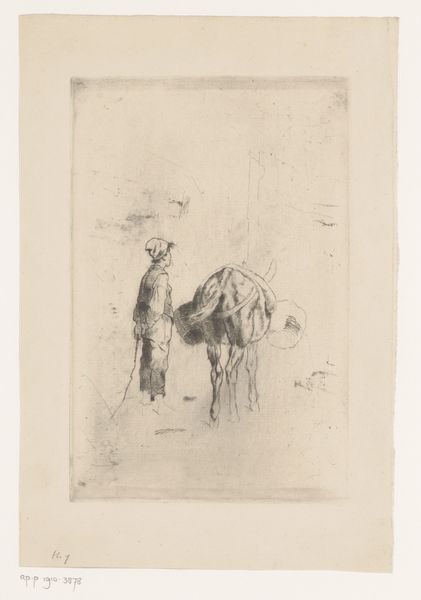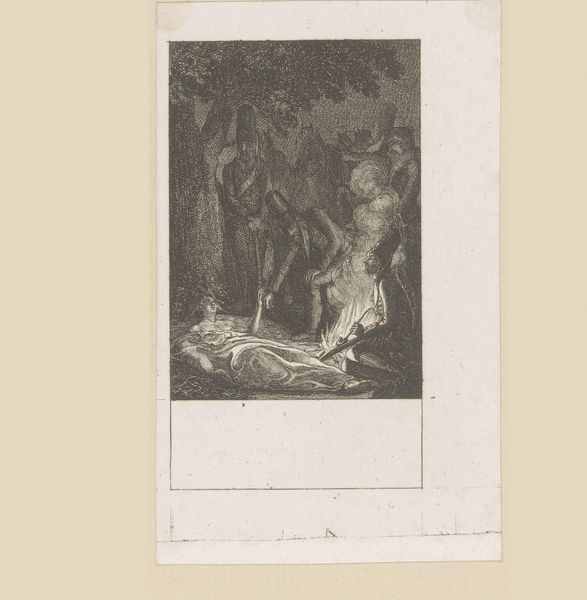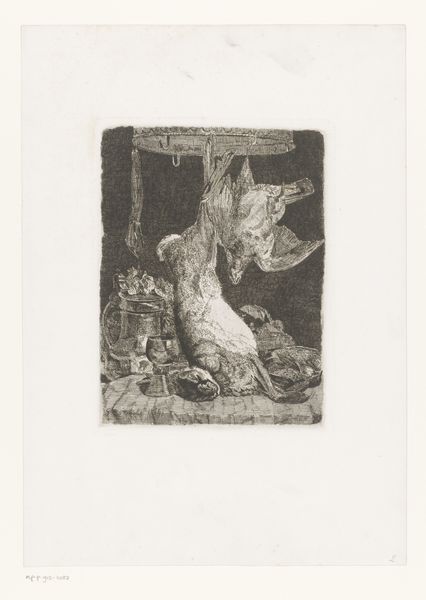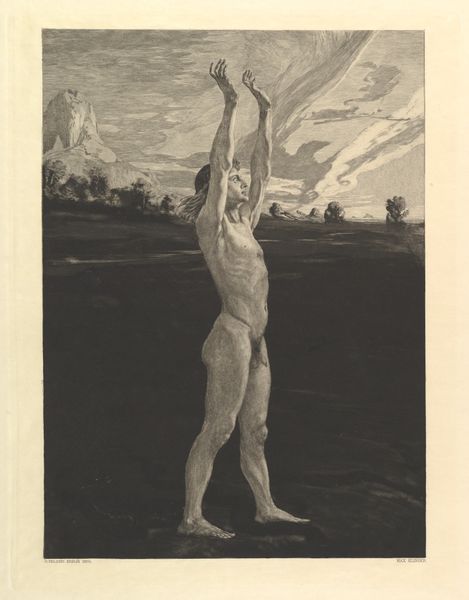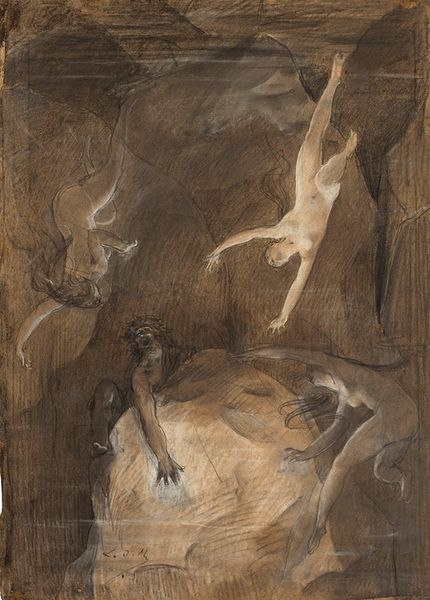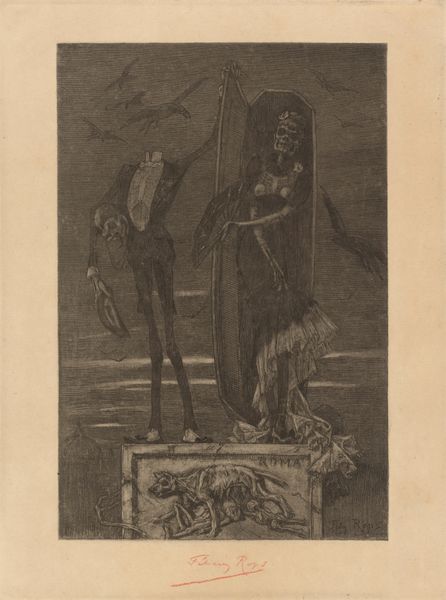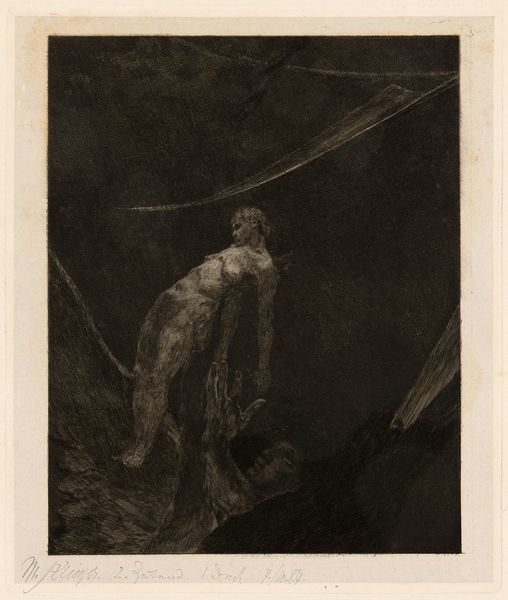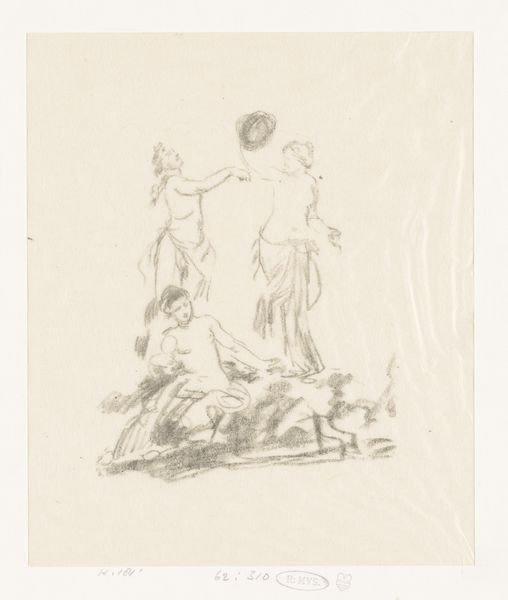
Nachtscène met de verminkte lichamen van de gebroeders De Witt aan de galg 1672
0:00
0:00
painting, watercolor
#
narrative-art
#
baroque
#
painting
#
landscape
#
figuration
#
watercolor
#
momento-mori
#
genre-painting
#
history-painting
#
nude
#
watercolor
Dimensions: height 245 mm, width 191 mm
Copyright: Rijks Museum: Open Domain
Curator: Ugh, talk about a heavy image. Immediately, it hits you like a punch to the gut. All that muted color somehow makes it worse, doesn't it? Like draining the joy from everything. Editor: Indeed. This watercolor piece is called "Nachtscène met de verminkte lichamen van de gebroeders De Witt aan de galg," which translates to "Night scene with the mutilated bodies of the De Witt brothers on the gallows.” It’s attributed to an anonymous artist from 1672. Curator: Anonymous, eh? Adds another layer of eerie. Given the, um, *subject matter,* makes you wonder about the artist’s own politics and possible risk involved at that time. It has this strange quality of landscape meets horror show...The gallows dominates everything like the grim reaper come for us all. Editor: Well, certainly death is on display. I see so many layers of symbolic weight, starting with the two bodies, which in their inversion disrupt notions of power. The torches are a study in contrasts of hidden meanings: Enlightenment? Justice? Or, more darkly, knowledge wielded with malicious intent? Curator: Oof, the visual language of humiliation. The bucket, maybe for offerings or perhaps urine—just takes you there. Plus the overall wash, or lack thereof, of color feels deliberate, almost like we’re looking at reality under the influence of a terrible hangover or fever dream. What lingers is the visceral sense that everything could spin violently out of control. The artist, while unknown, leaves an undeniably impactful statement. Editor: Yes, impact as a reflection of chaos and powerlessness. Even the ladder, leaning so casually, hints at an absent authority, abandoning any semblance of moral uprightness. Truly, this watercolor painting embodies Baroque drama and intensity in a compact frame—haunting in its brutal depiction of not just death, but the disintegration of order. Curator: Looking again at that seemingly off-hand landscape background and you realize even nature reflects human barbarity. In any case, powerful work, and yes, thought-provoking stuff from the Rijksmuseum vaults. Editor: Quite so. One might leave here contemplating not only images of history but history held captive in images.
Comments
No comments
Be the first to comment and join the conversation on the ultimate creative platform.
